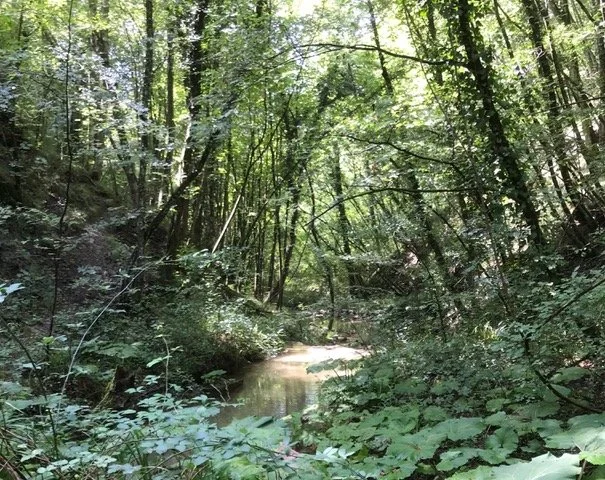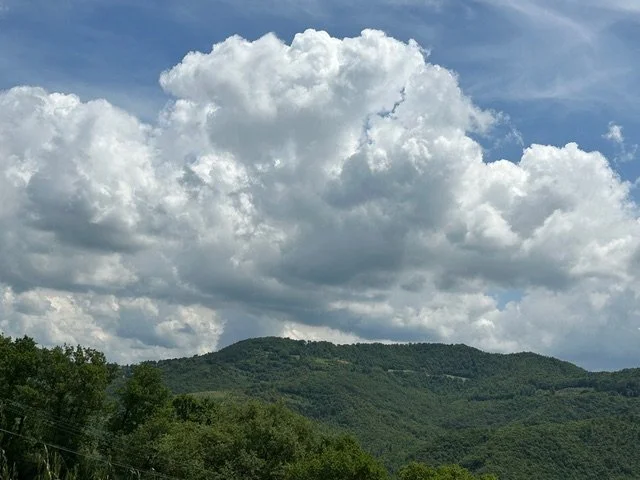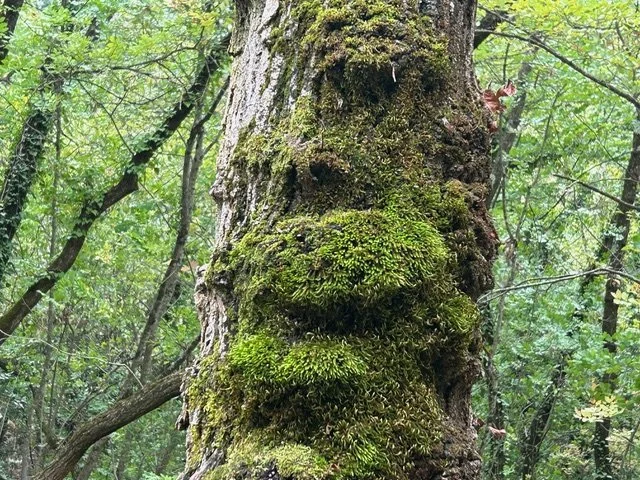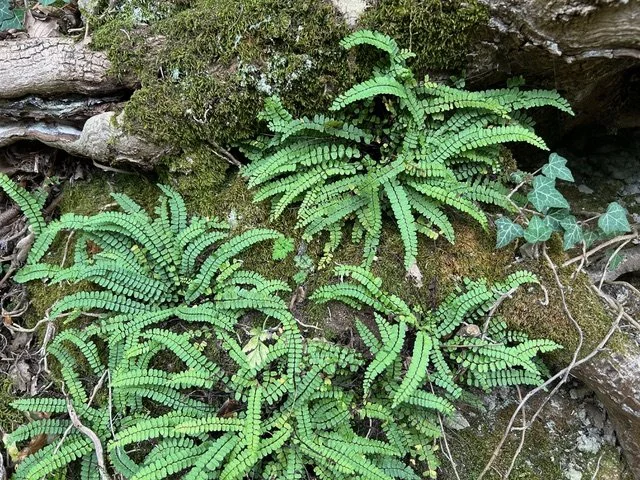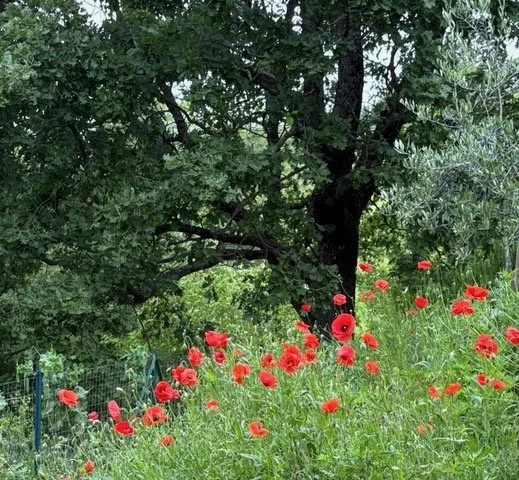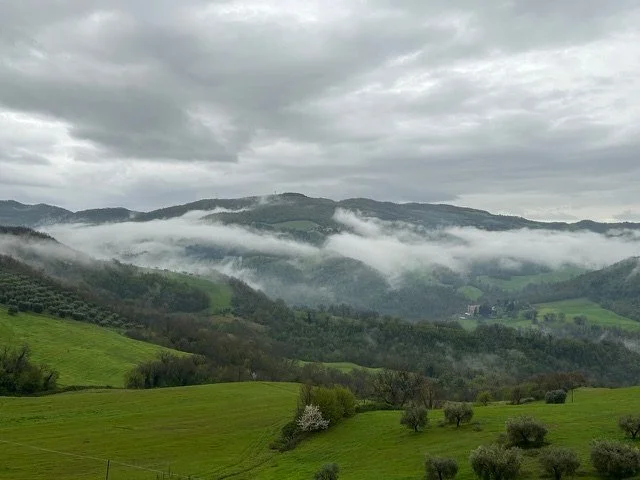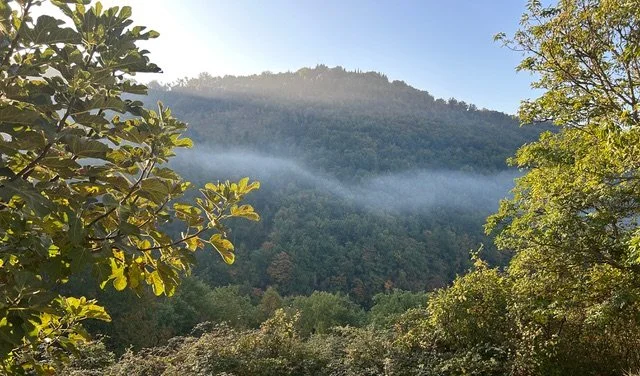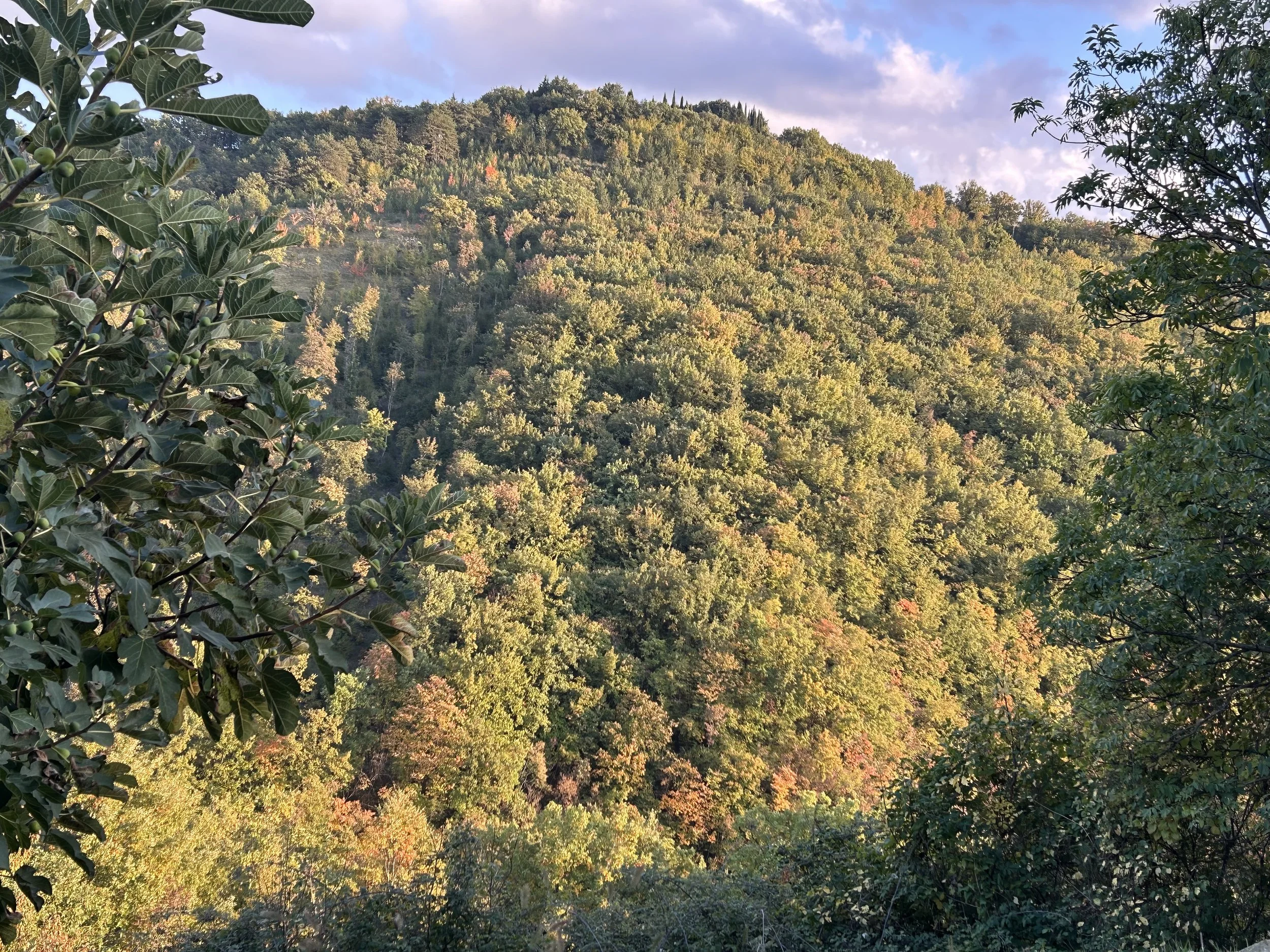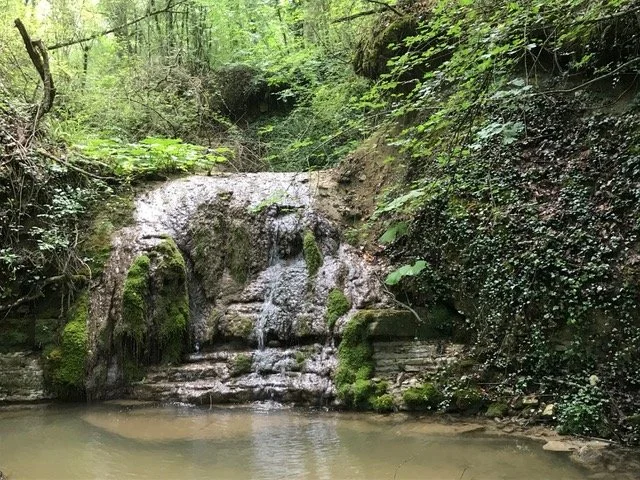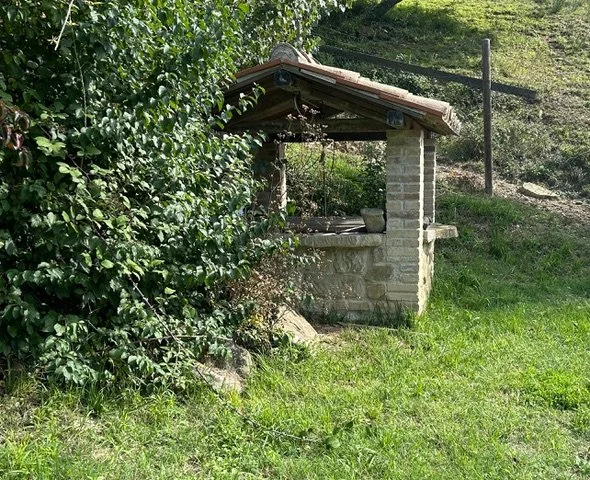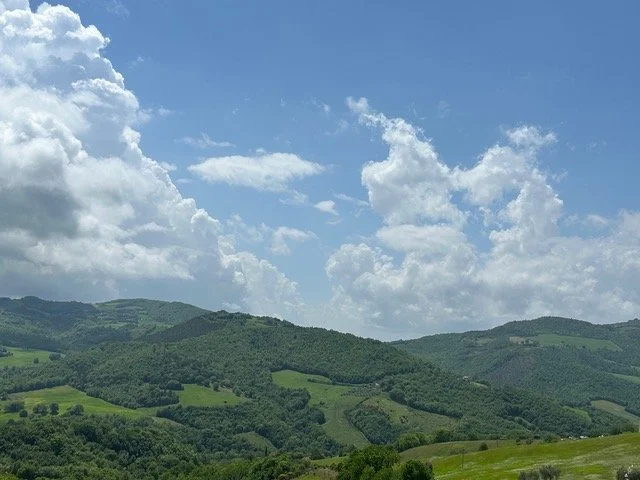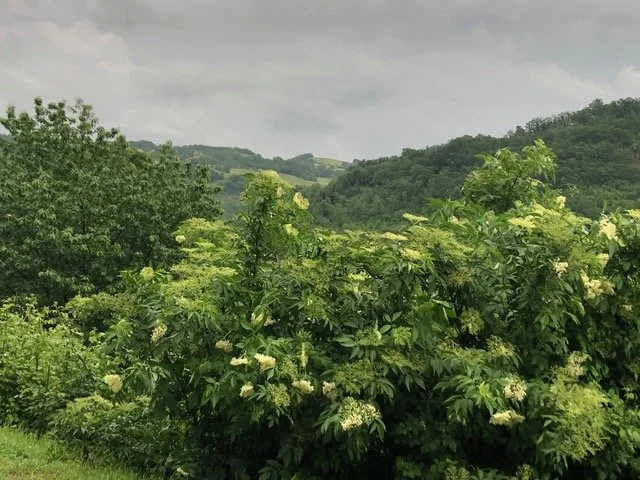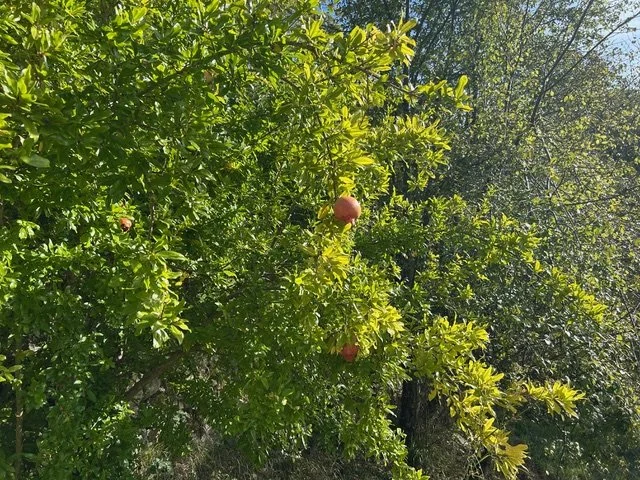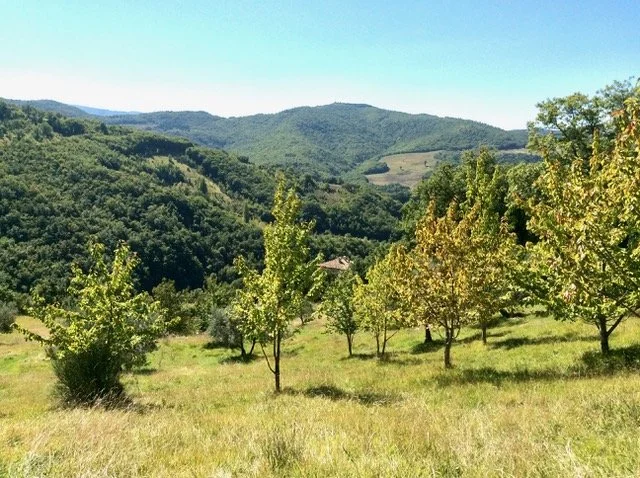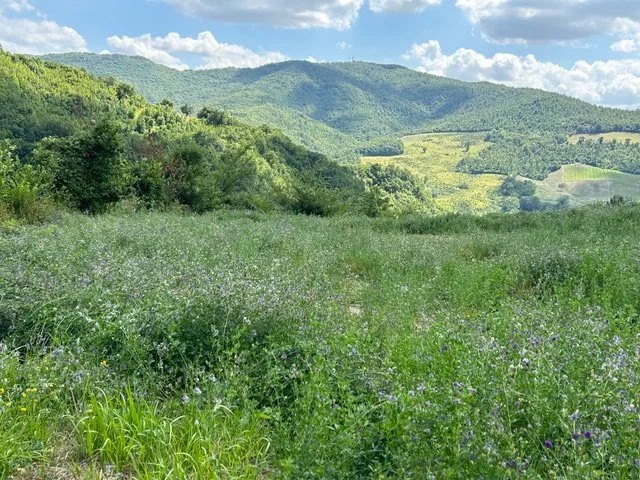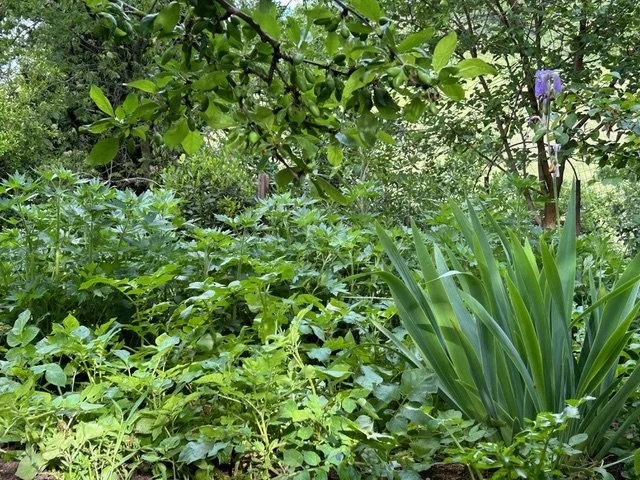Do Forests Make It Rain?
Having Enough; Ramblings from a Herder/Gatherer…
My intention is to seduce you with the beauty, the constant wonder, and the ease of living in a partnership with the natural world.
For my family, living in deep country, working with the land, growing food within the existing natural conditions, has meant less work, little stress, more self-reliance and enough money. We have enough. We have enough food and a supportive community. We have enough time to do what we wish. And with every season, the soil is enriched, more trees are planted, more species are thriving. And living simpler has become a form of protest.
I am trying something new—fewer words, more images. Real images. I am weary of all the words on the internet, my own included. If I read about regenerative agriculture, I want to see those fields, see the results. I want to know what is possible. I learn by observing.
I'll try to keep what I write simple and seasonal.
The small river bordering our land and running the length of our valley.
Water is the limiting factor for all farming, for all our food. One can restore degraded soil but without enough water, no life can survive on it. When I was looking for fertile affordable farmland, without knowing it at the time, I was really looking for plentiful water. Water is becoming 'the' challenge to food security—there is too much, it is badly degraded, or there is not enough.
The valley I settled in, a dense forest with small cultivated plots carved out between the trees, is perpetually green. It is often covered with a river of mist in the early morning, clouds in the sky most days. The constant presence of low cumulus clouds meant increased humidity. No one needed to tell me that the soil was fertile, that there was enough moisture, that I could grow food all year round. I could see it.
The valley I settled in is perpetually green.
In winter, when I first saw the land, the forest floor was a brilliant green, covered in a wealth of diverse plant life as well as mosses and lichen.
And in the summer, no one was irrigating the robust woodlands, the stands of fruit and nut trees, the fields of cultivated grain and wildflowers.
In forest ecosystems, water vapor often rises as morning fog. It cools and forms low level cloud cover throughout the day. Moisture is held within and just above the earth even during our hottest months.
Our valley from the summit.
An increasingly popular theory is that our forests, especially our large forests, are the major regulator of our atmospheric system, of our water cycle. As rain percolates through the soil, the tree roots take up the water, releasing any excess moisture as water vapor from their needles or leaves. This process, this cycling of water—evapotranspiration—creates a low atmospheric pressure pulling in more moisture. This biotic pump... delivers more moisture to the atmosphere than evaporation from a body of water of equivalent size. In short, forests actively increase their own moisture, their own rainfall.
From my window this morning’s mist is …
… this evening’s clouds.
The river runs the length of our valley, flowing downhill, creating waterfalls as it meanders. The vegetation surrounding it is dense, a year round habitat and food source for all; water to drink, to bathe, to nourish an immense amount of vegetation. And from the mountain summit above us, underground springs originate, one of which feeds our well. Ironically, this land was less desirable (and far cheaper) than the flat, exhausted, over-fertilized farm fields on the plain.
Our swimming hole. No chlorine needed.
The area around our well is always bright green with new growth, a sign of an active underground spring.
There is no erosion in the old growth forest. The deep roots of the forest trees and the large diverse community of soil organisms hold the earth.
The fields of our valley—most often at the edge of the woodlands—support numerous fruit and nut trees. Some are native and have spread extensively, some were brought to Italy from Greece, the Middle East, and China generations ago. Cherry, plum, persimmon, apricot, walnut, olive, and fig trees are scattered in the fields, along the road and next to the houses. The figs and olives are our two major crops.
From left to right a hedgerow with a cherry tree, blackberry bushes, and elderberry bushes.
A pomegranate tree on the edge of the forest
Olive trees (with walnut trees below) growing in the hayfield above our house.
The many hedgerows separating the fields and the large stands of wild grasses shelter many animals and ground-dwelling birds, a variety of medicinal plants and wild greens. They also feed our grazing animals and ourselves.
The fields and hedgerows are as productive as any hectare of cultivated land, perhaps more so. And without tractors there is no compacted soil. I plant beneath the trees, utilizing the vertical as well as horizontal space, getting several times more yield from the area with less input and more cycling of moisture than conventional farming.
If the theory of the biotic pump is correct—and the forests play an essential role in the water cycle—this gives urgent importance to saving our old growth forests and restoring those which have been demolished or degraded. A partnership with our forests, on which our living earth depends, forces us to rethink our use of wood products—any wood product—from paper napkins to the new desk. It goes beyond protesting logging and habitat destruction for new homes. We all have a part in this. Every one of us can make a difference.
Some further thoughts:
https://www.researchgate.net/publication/228528788_
The_Biotic_Pump_Condensation_atmospheric_dynamics_and_climate
October 14, 2025 ©www.thesubversivefarmer.net
In a previous lifetime, Zia Gallina worked as a botanist for the National Parks Service, on the C&O Canal outside of Washington D.C. (lecturing on wild indigenous and naturalized medicinal and culinary plants). She was also an adjunct professor teaching biology and environmental science at American University, Washington D.C. But she has always been a champion of small-scale biointensive farming, tagging behind Mother Nature, trying to stay as close as she can get.
